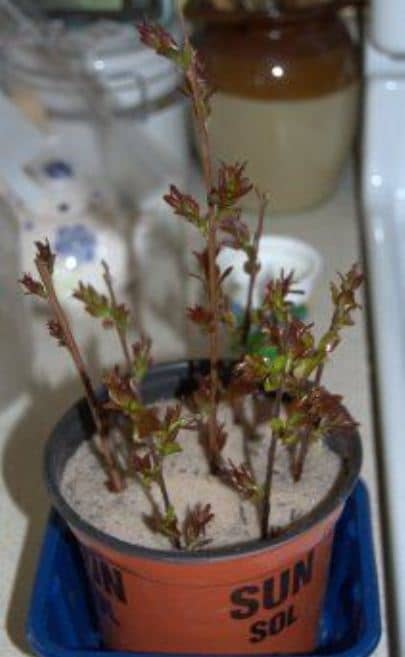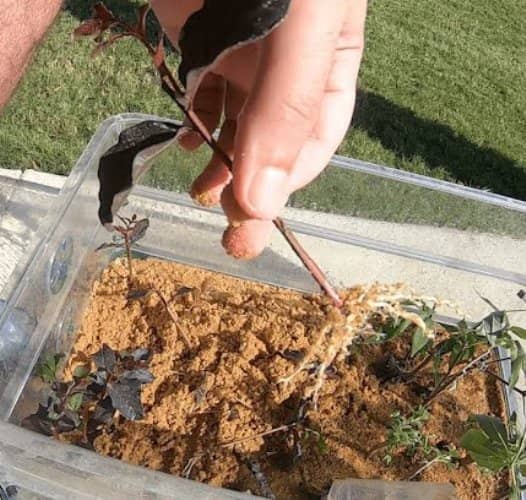How to propagate, grow myrtle from cuttings and its care
Do you love crape myrtles? Would you like to grow more of them in your home, but don’t want to break the bank in the process? You’re in luck. You can often propagate plants from their mature counterparts. This allows you to create more of the same plant without spending more money. If you’re interested in propagating crape myrtles, you’ve come to the right place. I’m going to share with you how to propagate and grow crape myrtles.
Ideal conditions for growing myrtle
Before you consider propagating and growing Myrtle, you should make sure that you have the right growing conditions for this plant.
If you already have a mature crepe myrtle growing around your property, this might be old news. However, if you’ve received a cutting from a friend, it’s important to know.
Crepe myrtles are hardy in temperate zones, they can withstand cold winters, but they will not produce leaves or flowers during that season. However, they should regrow once the winter is over.
Myrtles need full sunlight. This equates to about six hours of sunlight a day or more.
Once established, plants can withstand periods of drought, but be sure to plant them in well-draining soil and water them regularly to encourage strong root systems to form.
Find the right spot in your home to grow crepe myrtle to ensure that everything is ready for this plant when it begins to grow.
How to Propagate Myrtle from a Cutting

To propagate, take a cutting (stem) from the new growth of the plant. This cutting should be about 15 centimeters long, have three or four nodes and some leaves.
The cutting should come from a part of the plant that is separated from the main branch of the myrtle.
A good time to take such a cutting is in the fall or spring. Once you have it, place the tree piece in a well-draining container and in a properly draining growing medium.
Sand is a good choice as a growing medium when propagating plants. Place the container in a shady spot and make sure the growing medium stays moist.
To do this, spray the soil or sand regularly with a spray bottle. This will keep the moisture in the soil without saturating the cutting.
It is also advisable to cover the container with plastic wrap or a bag. This creates a greenhouse effect and helps the cutting retain moisture. The cutting should root within a month or two.
Once the plants have taken root, they are ready to be transplanted during their dormant period. This occurs during the autumn or winter months.
How to plant a Myrtle

Make sure you find a planting location with all the specifications mentioned above.
From there, dig a hole four times wider than the base of the plant. Don’t dig the hole deeper than the container (or bed) the myrtle was growing in.
Spread out the roots of the plant and place it in the hole. Cover the base of the plant with soil and press down firmly to ensure that air does not reach the roots.
From there, mulch the plant and water it deeply. This will help it develop stronger roots and also reduce the amount of work you have to do on your part.
Myrtle Care
Irrigation
For starters, myrtle needs consistent watering. The secret is to make sure the soil isn’t soggy. If this happens, you’re just asking for root rot to become a problem for your plants.
This can be avoided by planting in well-draining soil. You should also use the deep watering method. This method involves watering on fewer days and for longer periods of time.
This ensures that the plant receives the proper amount of moisture during a watering session without becoming soaked.
The time between watering sessions allows the plant to absorb moisture. Mulching around the base of the plant should help retain moisture for longer.
Pass
Applying a slow-release fertilizer to the plant annually should be enough to keep it healthy.
You can even reapply fertilizer around the base each spring when it wakes up from dormancy. This will help provide a nutrient boost and ensure that all the nutrients the plant used during the previous growing season are replenished.
Pruning
It is important that you only prune your crepe myrtle during the winter. This plant only flowers from new growth. If you wait for the plant to produce new growth, you will remove that year’s flowers.
So, prune the plant while it is dormant. When pruning, your goal is to shape the plant. It may not need it every year, but if it starts to look untidy, use shears to prune it to the shape and size you want for it.
Plagues and diseases
Although the crepe myrtle is a beautiful, low-maintenance tree, it does have pests and diseases to watch out for.
Aphids are the biggest pest that gardeners need to be aware of. Not only do they feed on plant sap, but they can also cause disease.
Sooty mold is caused by the droppings of aphids. The best way to treat both aphid infestation and sooty mold is to spray your crepe myrtle plants with insecticide. Repeat the treatment as needed.
Crepe myrtle is prone to fungal diseases. Some of the biggest concerns are powdery mildew and leaf spot. Powdery mildew looks like powdered sugar has been sprinkled all over the plant.
Leaf spot begins as dark spots on the plant’s foliage. It eventually devours your plant in the form of black mold. Both diseases can be treated with a fungicide.
The last disease you need to be aware of is root rot. This forms when your plant is not placed in well-drained soil. To beat this disease, choose a suitable location for your myrtle.
If you choose a suitable planting location, keep an eye out for pests, and treat early signs of disease, you should have a positive gardening experience.
